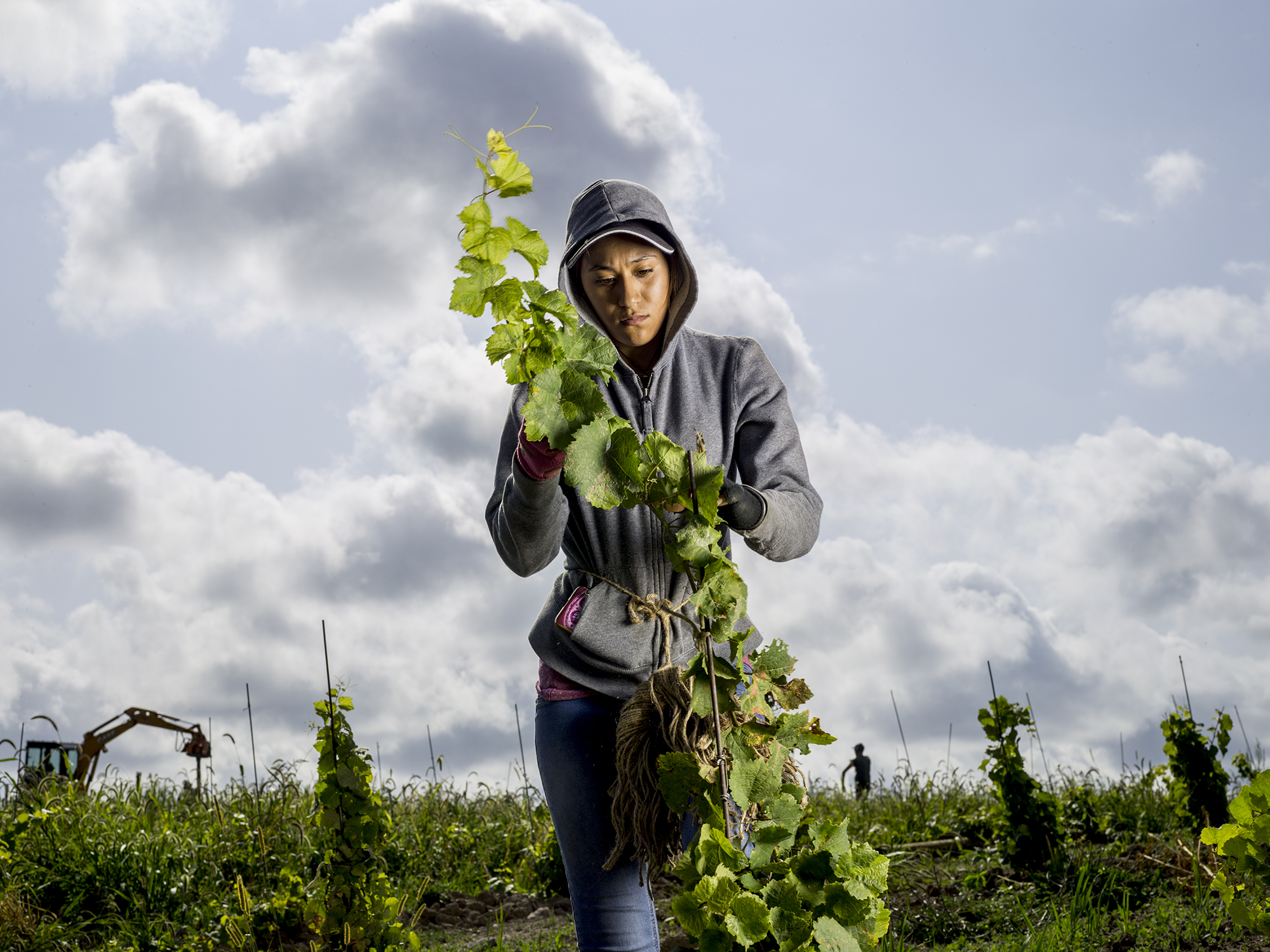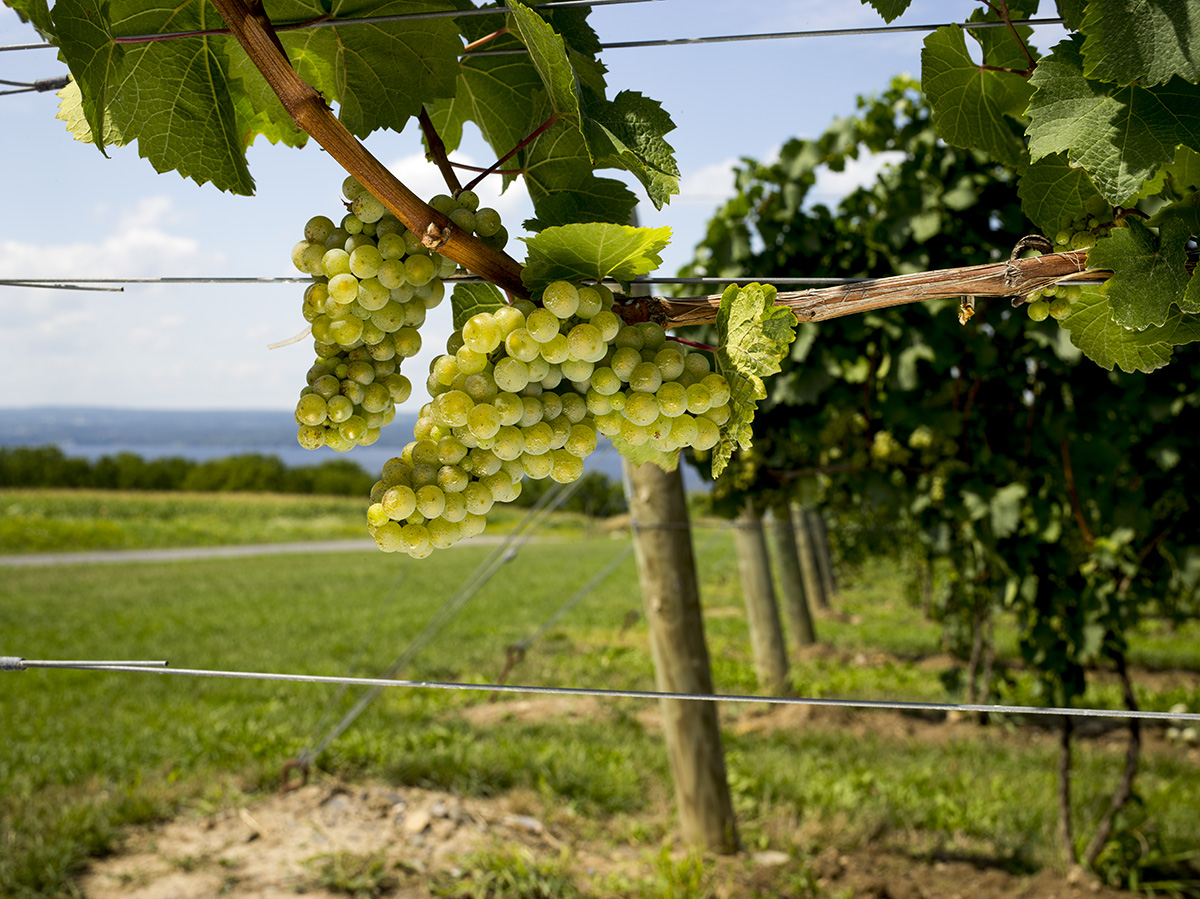
Vines with deeper roots also fare better in the winter when temperatures fall below zero and the upper layers of the soil (including the roots) freeze. Deeper roots mean healthier, drought-tolerant vines. We installed this tile four feet underground, so that the vines roots would need to reach at least that far to find the moisture they need. Grapevines do better in drier soils, so to ensure our soils stay dry, we installed drainage pipes called “tile” underneath the entire vineyard. Our soils have a high clay content, which means they retain moisture. We started with bare ground and asked ourselves, “How do we do this in a way that it will benefit the people growing grapes here 100 years from now?” To give ourselves the best chance of success, we began the development of the vineyard even before we planted any vines. We want our fruit to get ripe every single year-no matter what kind of weather the season gives us. When fruit is under-ripe, its juice can be overly acidic and lack flavor (think of biting into an under-ripe peach.) Here at Boundary Breaks, when we aim for “ripeness,” we are aiming for more than “sweetness ” we are also aiming for “flavor.” In either case, the result can be a harvest of under-ripe fruit.
Boundary breaks winery full#
At Boundary Breaks, we grow each of these varieties and produce wines that express the full range styles that are possible from such classic grapes.

The lakes also make it possible to produce world-class wines from varieties that are known to flourish in cooler climates.Ĭool-climate varieties include Riesling, Gewurztraminer and Cabernet Franc. These lakes, and the glaciers that created them, make it possible to grow grape varieties that otherwise would not survive the cold winters. This means grapes planted closer to the shore of the lake are likely to get riper during the short growing season. The warmer temperatures near the shores of Seneca Lake create a more hospitable climate for grape vines planted there. Temperatures near shores of the lake during the winter are warmer than temperatures at higher elevation a short distance away. Even though winter temperatures can fall below zero, Seneca Lake rarely freezes over.īecause Seneca Lake is so large and deep, it moderates the weather conditions around its shores. It will be better in a couple of years and very different in ten-they are often more interesting with age and gentle oxidation.Seneca Lake is the deepest of the eleven Finger Lakes in Central New York. I bet this ages well, perhaps better than anticipated, but you can enjoy this incarnation right now if you must. After two days in the fridge, it was brighter, livelier and better, every grape, seemingly, defined and expressive as it sat on the tongue. It is all about the fruit and character, although it could use a bit more depth. It has all the complexity the winery mentioned. It does not seem either thick or cloying, but it has a perfect expression of Riesling that doesn't fade. Ice Wine, actually, is often surprisingly fresh and elegant, and not just in the Finger Lakes. It has plenty of concentration, but we are still in the Finger Lakes.

"Additionally, grapes left out in the elements turn brown and have a raisin-like quality.the 'Maillard Reaction'.converts sugars and amino acids into new compounds which are responsible for new and distinctive flavors."Īfter that buildup, you expect me to tell you this is dense and concentrated and all that? Sort of. The difference, they say, "is the level of concentration.prior to fermentation," which they described as 27.29 Brix for cryogenic versus close to 40 for this wine frozen on the vine. This, the winery is proud to point out, is a "true" ice wine-frozen on the vine, not cryogenically. It comes in with 11.8% alcohol, 184 grams of residual sugar and 7.4 of total acidity. The 2018 Riesling Ice Wine, made by winemaker David Breeden, was picked on January 14, 2018, and bottled on July 1, 2018.


 0 kommentar(er)
0 kommentar(er)
